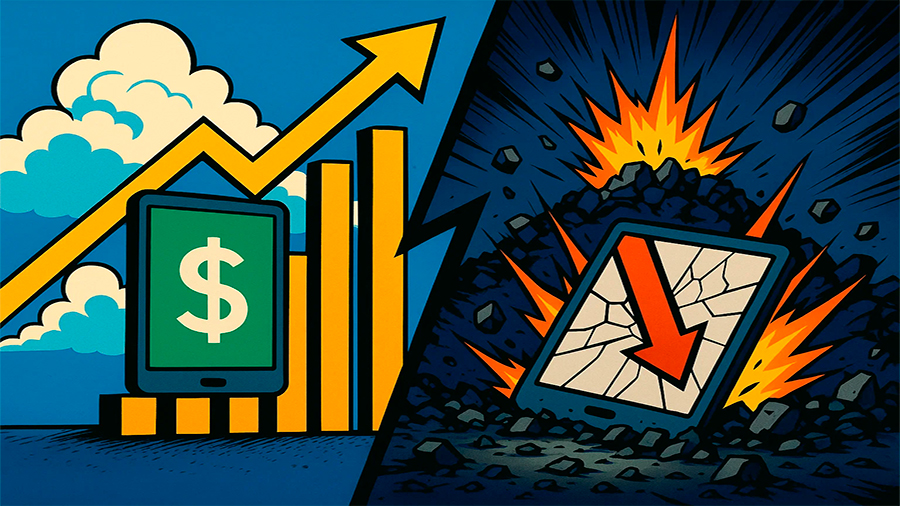Credit Fatigue: Why Consumers Are Losing Trust in Banks and MFOs
Once upon a time, getting a credit offer felt empowering — a stamp of approval from the financial world. It said, “We trust you.” But today, that same offer often feels like noise, or worse, a red flag. More and more people are ignoring pre-approved loan emails, deleting push notifications, and actively avoiding financial apps. The term for this emotional and behavioral shift is “credit fatigue,” and it’s becoming one of the most telling signals of how strained the relationship between lenders and borrowers has become.
Credit fatigue isn’t just about debt. It’s about what happens when consumers feel hounded, pressured, and ultimately disillusioned by the very institutions that promised to help. It’s fatigue caused by endless loan offers, unclear terms, poor customer support, and the sinking feeling that the system isn’t built to serve them — just to profit from them. And whether you’re a traditional bank, a microfinance operator (MFO), or a flashy digital lender, the effects are impossible to ignore.
How Credit Fatigue Develops
Let’s start with the root cause: overexposure. Every financial platform today seems eager to push credit. Open your banking app — there’s a loan suggestion. Buy something online — there’s a “pay later” button. Scroll through social media — you’ll see ads promising instant money with zero effort. At first, all this access seemed like progress. But eventually, consumers started asking: Why is it this easy to borrow money, but so hard to get out of debt?
Credit fatigue builds when expectations and reality collide. People sign up for loans thinking they’re getting support, only to find hidden fees, inflexible repayment terms, or vague explanations when things go wrong. Over time, the constant stream of offers starts to feel more like harassment than help. This isn’t just about being overwhelmed — it’s about losing confidence in the entire credit system.
Common Triggers of Credit Fatigue
| Trigger |
Why It Matters |
| Repeated loan offers in apps |
Creates pressure to borrow even when not needed |
| Lack of transparent terms |
Breeds distrust and confusion about costs |
| Default-heavy contract design |
Pushes consumers into debt spirals |
| No human contact or support |
Makes borrowers feel abandoned when problems arise |
These experiences aren’t rare. They’re becoming the norm. And as they add up, consumers stop engaging — not just with one lender, but with credit altogether.

The Emotional Cost of Borrowing
We often talk about credit in terms of interest rates and payment schedules. But there’s an emotional side, too. Borrowing is intimate. It reflects personal needs, goals, fears. When lenders ignore this and treat borrowers like just another number in a marketing funnel, the result is more than dissatisfaction — it’s emotional burnout.
Many borrowers report feeling tricked. They were promised flexible, low-stress financial support but ended up in stressful, high-cost obligations. When that happens, it’s not just their wallet that suffers. It’s their sense of trust. They may stop asking for help, even when they genuinely need it — because they assume it will only make things worse.
Psychological Signs of Credit Fatigue
- Refusing new credit offers out of fear, not disinterest
- Ignoring loan repayment reminders due to anxiety or shame
- Switching banks or apps frequently to avoid persistent lenders
- Spending less time managing finances to avoid confrontation
In extreme cases, people disengage entirely from the financial system, relying solely on cash or informal arrangements just to feel in control again.
The Role of Microfinance Organizations
Microfinance started as a way to help underserved communities — those overlooked by traditional banks. But many MFOs have shifted from that mission. They now operate like high-volume lenders, offering small, fast loans with aggressive terms and little support. This is especially common in countries where digital regulation is loose, and enforcement is inconsistent.
Borrowers are often lured by ease — no paperwork, fast approval, cash today. But repayment terms can be brutal. Daily payments, high penalties for delays, and even social shaming tactics in collection calls. These practices not only drain wallets — they destroy trust. The very people MFOs were meant to empower now see them as predators.
What Consumers Say About MFOs
| Borrower Complaint |
Common Outcome |
| Wasn’t told total cost of loan |
Missed payment, account blocked |
| Collectors called family and friends |
Public embarrassment, mental distress |
| App keeps offering top-up loans |
Debt cycle, repeated borrowing |
These stories spread quickly — on review sites, on social media, and in private messaging groups. And once word gets out, new customers stay away.
The Rise — and Fallout — of Digital Lending
The rise of app-based lending made loans accessible to more people than ever. But it also introduced a new problem: borrowing without thinking. When you can get cash in three taps, the emotional weight of borrowing vanishes — until the bill arrives. Many digital lenders rely on behavioral nudges to increase uptake: they use limited-time offers, rewards, and pre-approved messages to spark action. But what happens when the person clicks “accept” too fast?
Credit fatigue is the answer. Borrowers who feel tricked or rushed eventually learn to resist — even when they need support. Worse, many digital lenders offer no real person to talk to when things go wrong. Just bots, emails, and policies.

The Trust Deficit
Trust, once lost, is hard to regain. When banks or lenders push credit irresponsibly, people don’t just reject that lender — they stop believing in the whole system. They delay important purchases, skip emergencies, or rely on unsafe borrowing alternatives. This harms not only the consumer but the economy overall.
Lenders now face a choice: double down on aggressive acquisition or rethink the way they build relationships. The smart ones are choosing transparency, support, and education. They’re offering clearer contracts, human help, and products that actually solve problems instead of creating new ones.
What Consumers Want Now
- Straightforward loan terms with no hidden fees
- Flexible repayment options and emergency pauses
- Less pressure to borrow repeatedly
- Real customer support, not automated excuses
These aren’t unreasonable asks. They’re signs of a mature, respectful financial relationship — one that works both ways.
The Conclusion
Credit fatigue isn’t just about exhaustion — it’s about a system that forgot to put people first. When consumers feel manipulated, misled, or overexposed to debt, they do what anyone would: shut down. Ignore. Walk away. And that silence is louder than any loan campaign. It’s a signal to the industry that trust has limits. If lenders want people to engage again, they’ll need to rebuild that trust with honesty, empathy, and a lot less noise.







